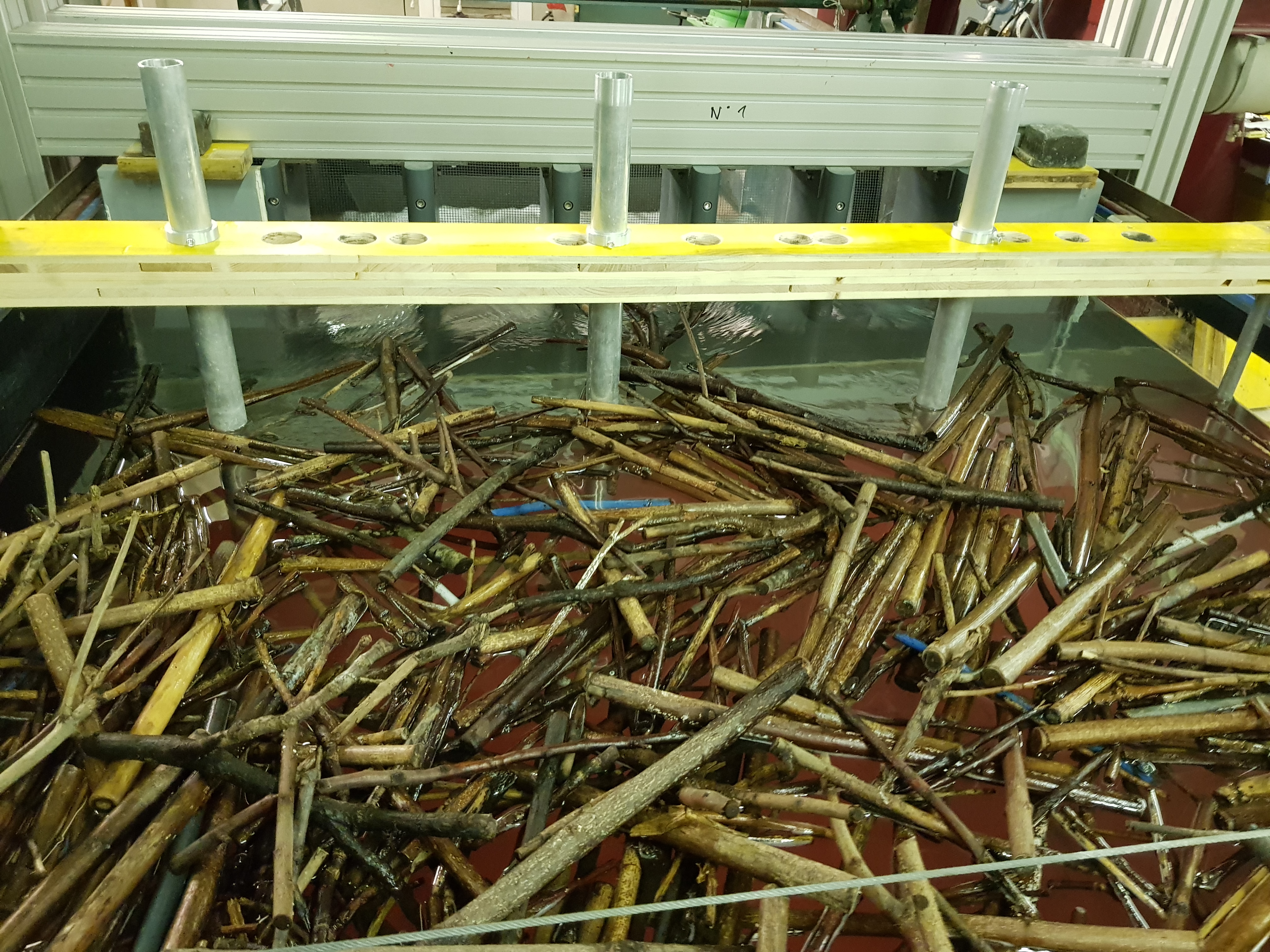Eco-Barrages - Threats and opportunities of driftwood in rivers
Ingénierie et Architecture

Driftwood belongs to natural rivers with a sound ecosystem. It should be conserved, although it potentially jams at civil structures as bridge piers or weirs, altering the flow section and rise the backwater. Safety considerations consequently suggest removing wood from rivers, whereas ecological experience demands for its presence.
The situation might become critical if dam spillways clog during floods, so that their discharge capacity significantly reduces. For narrow bays, full racks may trap the driftwood distant from the flow control section. The hydraulic capacity is then maintained, but the driftwood has to be removed after the event. We thus investigated a novel rack type in a physical model at EPFL, initiating partial driftwood passage and conserving a considerable discharge capacity.
A “partial rack” configuration was specified, consisting of a rack bar in front of every second pier at the weir only. In order to derive generalized results, we systematically varied the bay width, the discharge, the rack distance from the weir, and the driftwood appearance characteristics. The latter was composed according to in situ observations of blocked wood. The test program comprised 573 experiments. The driftwood trapping rate and discharge efficiency were specified for each experiment.
The partial rack enhanced the passage for sporadically arriving driftwood, but indicated an indifferent blockage ratio for congested appearances. Individually arriving trunks represent a frequent regime, and the partial rack provoked indeed a higher passage than the full rack. Extreme wood volumes were still blocked, being potentially an advantage for the safety of downstream flood plains. The spillway discharge capacity remained nevertheless relatively high, with the partial rack for all wood appearances. It was measured, typically, above 80 to 90% of the reference capacity without wood.
The proposed partial rack represents an alternative to classical full racks, if an enhanced driftwood passage is feasible for the lower catchment and a slightly reduced discharge capacity at the dam is acceptable. Ecological and safety aspects are then ideally combined.